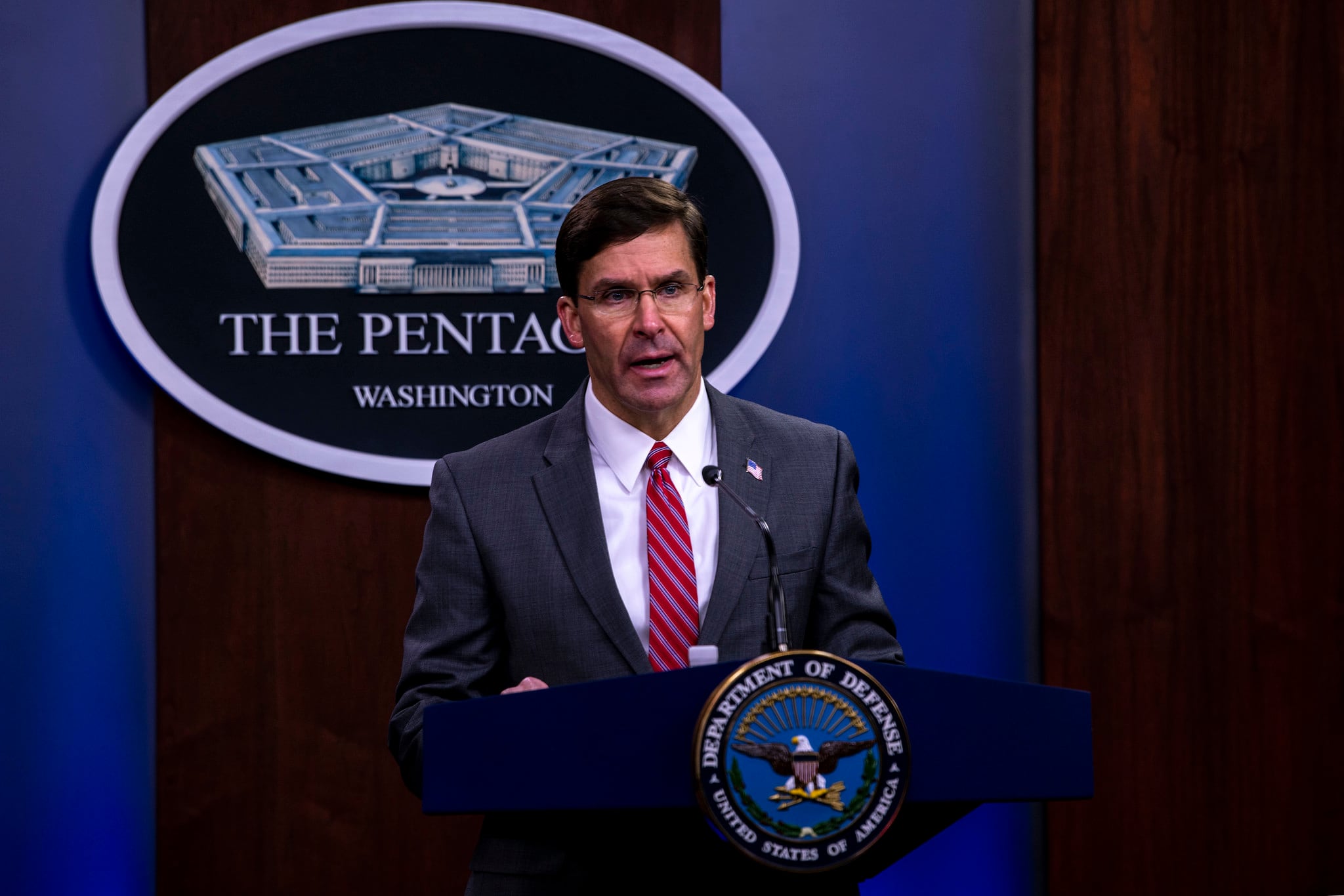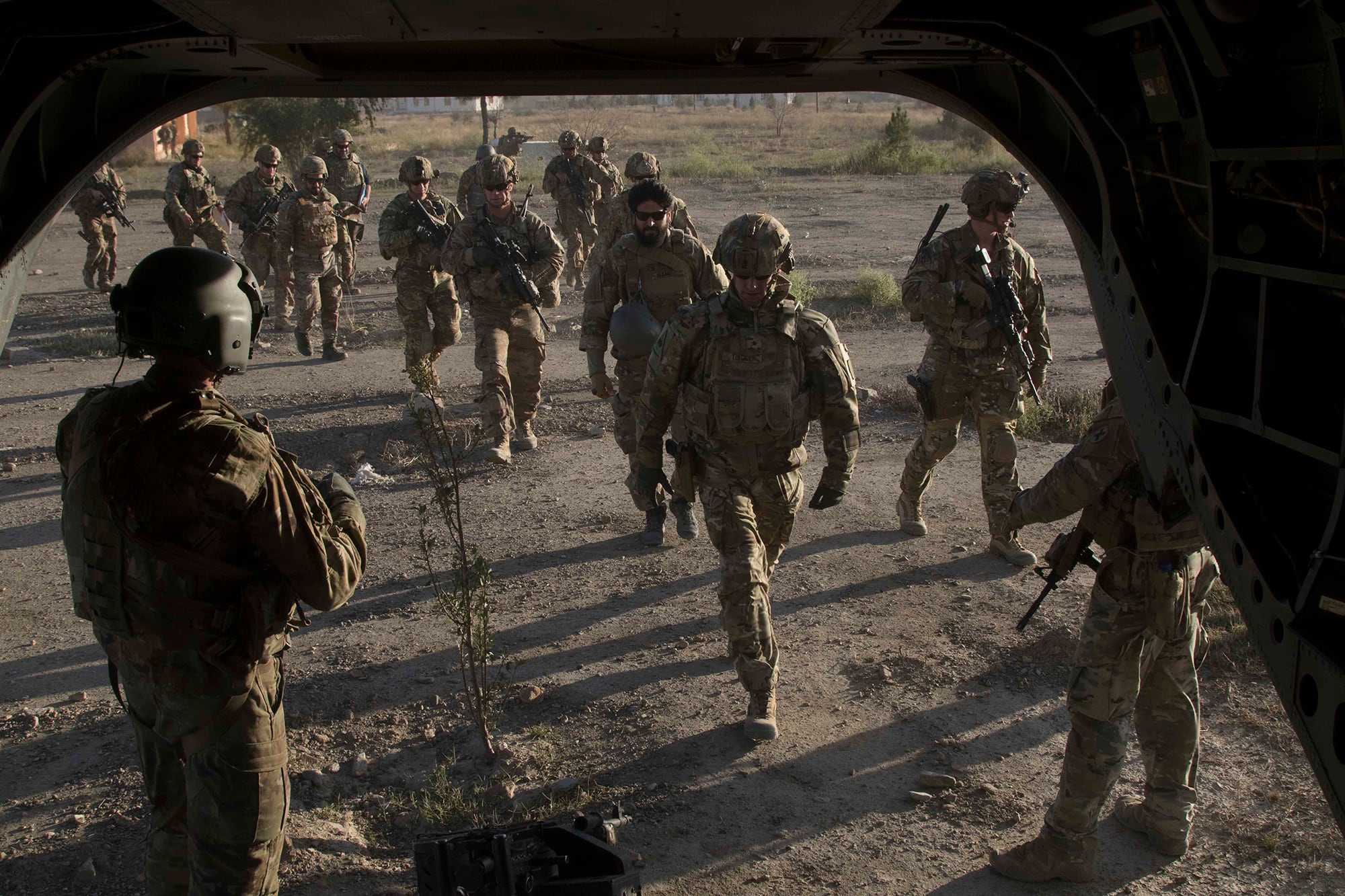Acting Defense Secretary Chris Miller announced on Tuesday that the U.S. will draw down its troop levels to 2,500 in both Iraq and Afghanistan in the new year, confirming rumors that have circulated in the week since President Donald Trump fired former Defense Secretary Mark Esper.
By Jan. 15, Miller said in a briefing during which he took no questions from reporters, Afghanistan will reduce from 4,500 and Iraq from 3,000.
“Today is another critical step in that direction and a result of President Trump’s bold leadership,” Miller said. “With the blessings of providence in the coming year, we will finish this generational war and bring our men and women home. We will protect our children from the heavy burden and toll of perpetual war. And we will honor the sacrifices made in service to peace and stability in Afghanistan, Iraq and around the world and celebrate all those who helped us secure freedom over oppression.”
Miller did not clarify if or when the number would come down to zero, but the rough plan since June has been to have all troops out of Afghanistan by May 2021, as long as conditions are met.
“Meanwhile, let us remind those who questioned our resolve or may seek to interfere with this prudent, well-planned and coordinated transition: the United States armed forces remain committed to protecting the safety and security for the American people and supporting our like minded allies and partners worldwide,” he said.
Speaking to reporters soon after Miller’s briefing, National Security Adviser Robert O’Brien confirmed that Trump wishes to have all troops of out Afghanistan by May.
Those conditions are a bit of a moving target. Pentagon officials have been saying for months that they include a reduction of violence against U.S. troops and a demonstration on the part of the Taliban that they are committed to preventing Afghanistan from becoming an al-Qaida safe haven again, in turn assuring that no further terrorist attacks against the U.S. will come out of that country.
“First and foremost, is the national security of America threatened by this maneuver, by this decision? And we do we do not feel that it is,” a senior defense official, who was not authorized to speak on the record, told reporters in a call prior to Miller’s announcement. “And second, can we maintain a force posture in Afghanistan that permits us to carry out our mission with our allies and partners?"
The official declined to comment on whether a reduction in violence was still part of those conditions.
The official also declined to specify what types of troops with be brought home. In recent years, units have been deploying either in a counter-terrorism capacity, largely fighting the ISIS contingent in Afghanistan, as well as in a train-advise-assist capacity, working with the Afghan National Army and National Police.
The official said that leaders in the region believed those missions could continue responsibly at 2,500.
“I have also spoken with our military commanders, and we all will execute this repositioning in a way that protects our fighting men and women, our partners in the intelligence community and diplomatic corps, and our superb allies that are critical to rebuilding Afghan and Iraqi security capabilities and civil society for lasting peace and troubled lands," he said.
The senior defense official declined to specify which military commanders had signed off on the plan.
But both Esper and Army Gen. Mark Milley, the chairman of the Joint Chiefs of Staff, balked when it came to confirming the move down to 2,500, reiterating that it would be based on certain conditions being met ― most notably, evidence that the Taliban was rejecting incursion from groups like ISIS and al-Qaida in Afghanistan, and a reduction in violent attacks.
They said as much, CNN first reported Tuesday, in a memo sent to the White House, arguing that conditions had not been met for further withdrawal.
“As to the current state of play, there is no contradiction and we will have no comment as to any memo you may or may not have,” the senior defense official told reporters.
Less than a week before he was fired, Esper told Military Times that he intended to push back against the White House if it moved to reduce troops to 2,500 after the new year.
“And those are the fights we’ll have privately right? The debates we’ll have privately, and I’ve taken a public position on that,” he said.
The plan as announced by Miller is not markedly different than the one the Pentagon and White House have been discussing publicly for months: moving from over 8,000 troops earlier this year down to 4,500 by early November, then down again to 2,500 early next year, then down to zero in May.
RELATED

Miller’s announcement came on the same day the Pentagon’s inspector general’s office released a new quarterly Afghanistan report, questioning whether the Taliban has been upholding its side of the peace talks.
“...it is unclear whether the Taliban is upholding its commitments since it is difficult to discern the extent to which they are meeting the requirement that Afghanistan not serve as a haven for terrorists who threaten the United States,” according to a Tuesday release from DoD’s IG, which covered July through October. “Furthermore, while the Taliban has generally honored its obligation to cease attacks against U.S. forces and interest in Afghanistan, they have escalated their attacks on Afghan forces.”
Attacks on civilians in Kabul and other places have also continued to rage, with more violence than the previous quarter, and higher levels than is normal for the summer fighting season.
“These actions threaten to derail the peace process between the Taliban and the Afghan government that began this quarter,” according to the IG report. “The two sides continue to disagree on procedural aspects of the negotiations.”
Swift backlash
Even before the formal announcement, members of Congress — including prominent Republicans — were raising concerns.
“A rapid withdrawal of U.S. forces from Afghanistan now would hurt our allies and delight the people who wish us harm,” Senate Majority Leader Mitch McConnell, R-Ky., said Monday in a speech on the Senate floor.
On Tuesday morning, the top Republican on the House Armed Services Committee, Rep. Mac Thornberry, of Texas, said he was expecting a call from Miller about Afghanistan at some point later in the day, but indicated he was not in favor of a major withdrawal at this time.
“Increased military pressure brought the Taliban to the table. And pretty much everybody agreed that further reductions would be conditions based. In other words, they give, and we give,” Thornberry said while speaking at the Heritage Foundation. “And I don’t know of any condition which justifies reducing further the troops that we have in Afghanistan. As a matter of fact, I think it undercuts some negotiations to say, ‘Well, whatever you do or don’t do, we’re going to reduce our troops even further.’”
“And so I am concerned, not only about what it means on the ground, but especially about what it means for negotiations, and then we could go, you know, through the other places that are rumored to have troop reductions. I just don’t know what they may be planning.”
Similar concerns were raised across the Atlantic, with NATO Secretary General Jens Stoltenberg saying in a statement that “We have been in Afghanistan for almost 20 years, and no NATO ally wants to stay any longer than necessary. But at the same time, the price for leaving too soon or in an uncoordinated way could be very high.”
Stoltenberg added that leaving Afghanistan now opens up the risk of it emerging as a haven for international terrorism and as breeding ground for ISIS.
German Defense Minister Annegret Kramp-Karrenbauer added in Tuesday comments that she was concerned an early departure of American forces would undermine NATO’s ongoing efforts in the region.
The NATO alliance has roughly 12,000 forces in Afghanistan, of which over half are from non-U.S. nations. The alliance forces are heavily dependent on American support and transportation capabilities.
Meghann Myers is the Pentagon bureau chief at Military Times. She covers operations, policy, personnel, leadership and other issues affecting service members.
Aaron Mehta was deputy editor and senior Pentagon correspondent for Defense News, covering policy, strategy and acquisition at the highest levels of the Defense Department and its international partners.
Joe Gould was the senior Pentagon reporter for Defense News, covering the intersection of national security policy, politics and the defense industry. He had previously served as Congress reporter.
